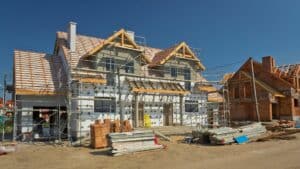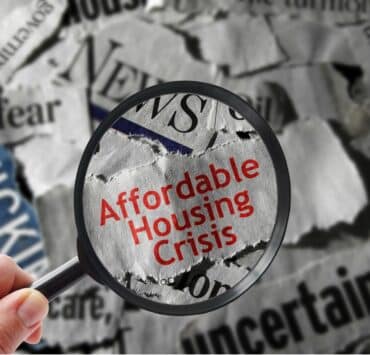As we bid farewell to 2023, a year marked by real estate extremes, it’s essential to unravel the complexities that led the housing market to an unprecedented standstill. High home prices, soaring mortgage rates, and a scarcity of homes on the market created a challenging landscape where buyers struggled to afford homes, sellers hesitated to sell, and frustration loomed large.
1. The Icy Grip of Mortgage Rates
“Higher mortgage rates are the dominant story for the U.S. housing market in 2023. Potential new buyers are coming into a very cold market”
– Len Kiefer, Deputy Chief Economist at Freddie Mac.
The relentless climb of mortgage interest rates, triggered by the U.S. Federal Reserve’s efforts to combat inflation, became a formidable barrier for prospective buyers. Starting the year in the mid-6% range, rates surged, peaking at over 8% in mid-October. The incremental changes, though seemingly small, significantly impacted buyers’ budgets, creating a chilly atmosphere in the housing market.
2. The Lock-In Effect: Freezing Home Listings
“Making a move is costly, so homeowners are only going to make a move if something is forcing them to make a change.” – Danielle Hale, Chief Economist at Realtor.com.
The ‘lock-in effect’ emerged as homeowners hesitated to list their properties, unwilling to part with their low mortgage rates. The scarcity of new listings, down by nearly 15.2% in the first 11 months of 2023, intensified the housing freeze.
3. Unyielding Home Prices
Contrary to predictions, home prices, instead of plummeting, edged up by 2.1% year over year, reaching a record median price of $428,000. Fierce competition for a limited housing supply led to persistent affordability challenges, especially for first-time homebuyers.
4. Decline in Home Sales
The ripple effects of high prices, mortgage rates, and limited inventory were evident in the sharp decline in home sales. Regional variations showcased the challenges, with sales dropping the most in the West, where home prices tend to be highest.
5. Rent Relief Amidst the Storm
While renters experienced a challenging year, the relentless surge in rental prices finally abated. Monthly rental prices increased modestly, and the past six months saw a slight decline, providing a glimmer of relief for tenants.
6. Stalled New Home Construction
“It was definitely a year that cooled off from the post-COVID housing boom.”
– Robert Dietz, Chief Economist of NAHB.
New home construction, a potential remedy to the housing crisis, faced challenges in 2023. Despite efforts by builders to offer incentives, the number of housing starts dropped by about 10%, exacerbating the existing housing shortage.
Thawing the Freeze: A Hopeful Outlook for 2024
As we reflect on the housing market’s deep freeze in 2023, the path forward lies in addressing the root causes of affordability challenges, unlocking regulatory barriers, and fostering a more dynamic and responsive real estate landscape. With lessons learned from the challenges of 2023, there’s hope for a gradual thaw and a more resilient housing market in 2024.
Related posts:
 Affordable Rental Provider Repays $710K to Arlington County
Affordable Rental Provider Repays $710K to Arlington County
 Reduce Your Environmental Footprint: Simple Water Conservation Tips for Your Home
Reduce Your Environmental Footprint: Simple Water Conservation Tips for Your Home
 10 Precautions to Stay Safe During a Home Renovation
10 Precautions to Stay Safe During a Home Renovation
 Increase in US Home Construction in 2023 Signals Robust Market Recovery
Increase in US Home Construction in 2023 Signals Robust Market Recovery
 New Construction Homes Sales Increase in 2024: A Look into the Rising Trend
New Construction Homes Sales Increase in 2024: A Look into the Rising Trend



